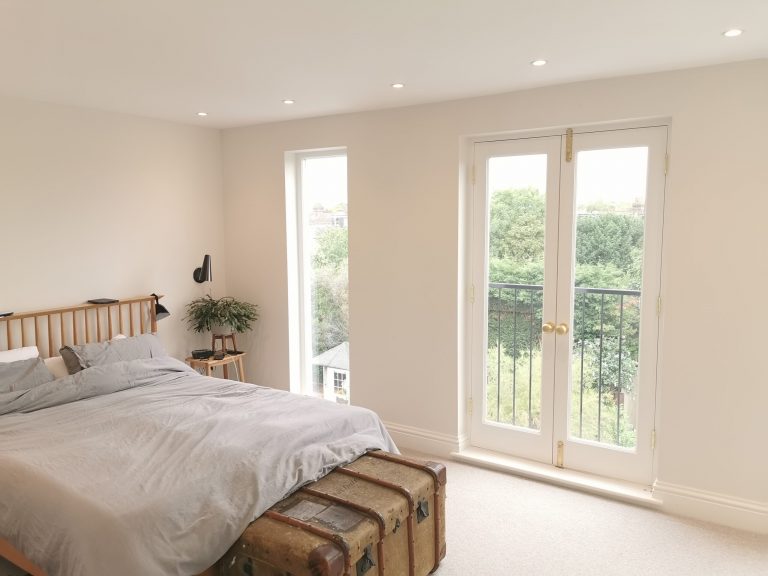
Complete Guide to Loft Conversion: Types, Costs, & Benefits 2024
Loft conversions are one of the most popular ways to maximize space and add value to a home. Whether you want to create a guest room, home office, or personal retreat, converting your loft is a smart investment that can transform underutilized space into a beautiful, functional part of your home. This guide covers everything you need to know about loft conversions, from types and costs to benefits, helping you make an informed decision.
1. Introduction to Loft Conversions
A loft conversion is the process of transforming an empty attic or loft into a usable room, adding significant functionality and value to your home. These spaces are often neglected, but with proper design and planning, they can be turned into highly desirable areas. This guide will help you understand the process, costs, and types of loft conversions, and the incredible benefits they offer.
2. Types of Loft Conversions
Choosing the right type of loft conversion is essential, as it affects both the usability of the space and your budget. Here are the most common types:
A. Dormer Loft Conversion
A dormer loft conversion is an extension that projects vertically from a sloped roof, creating additional floor space and headroom. Dormers are popular for their versatility and can be added to various types of homes, especially in urban areas where space is a premium.
- Pros: Increases headroom, suitable for most properties, relatively cost-effective.
- Cons: May require planning permission if extending significantly.
B. Mansard Loft Conversion
A mansard conversion is more extensive and involves altering the roof structure by creating a flat roof with sloping sides. This type of conversion is ideal for maximizing space but is usually more expensive and requires planning permission.
- Pros: Maximizes space and headroom, ideal for creating large rooms.
- Cons: Higher costs, extensive construction, planning permission required.
C. Hip-to-Gable Loft Conversion
A hip-to-gable conversion is suitable for homes with hipped roofs. This conversion extends the sloping end of the roof to create a vertical wall, increasing usable space.
- Pros: Ideal for semi-detached homes, increases space significantly.
- Cons: Limited to properties with hipped roofs, may require planning permission.
D. Roof Light/Velux Loft Conversion
Roof light conversions are the simplest type and involve adding windows to the existing roof without changing its structure. This conversion is ideal for homeowners on a budget or for those who want minimal disruption during construction.
- Pros: Cost-effective, no major structural changes, planning permission often not needed.
- Cons: Limited in headroom, suitable mainly for storage or basic living space.
E. L-Shaped Loft Conversion
L-shaped conversions involve constructing two dormers in an L-shape. This style is common in Victorian properties and offers a lot of space, making it suitable for adding multiple rooms.
- Pros: Adds substantial space, ideal for creating multiple rooms.
- Cons: High construction costs, may require planning permission.
3. Understanding the Costs of Loft Conversions
The cost of a loft conversion varies depending on the type, the size of your loft, and the level of customization. Below is a general cost breakdown for different types of conversions.
| Loft Conversion Type | Cost Range (£) | Description |
|---|
| A. Dormer Loft Conversion | £25,000 – £50,000 | Cost varies based on complexity and size. |
| B. Mansard Loft Conversion | £55,000 – £80,000 | More extensive and costly due to structural changes and additional planning involved. |
| C. Hip-to-Gable Loft Conversion | £35,000 – £55,000 | Costs can vary based on the addition of en-suite bathrooms or custom finishes. |
| D. Roof Light/Velux Loft Conversion | £20,000 – £35,000 | Most affordable option; retains existing roof structure, keeping costs low. |
| E. L-Shaped Loft Conversion | £70,000 – £95,000 | More expensive but adds considerable space. |
Additional Cost Factors to Consider
- Structural changes: Reinforcing floors or walls will increase costs.
- Plumbing and electrical work: Adding bathrooms, heating, and wiring increases the budget.
- Finishing touches: Custom furniture, flooring, and insulation impact the final price.
4. Benefits of Loft Conversions
Loft conversions offer a host of benefits that make them a popular choice for homeowners:
A. Increases Property Value
Loft conversions can add up to 20% to the value of your property, making it a wise investment for homeowners looking to increase their home’s resale price.
B. Maximizes Existing Space
A loft conversion utilizes underused space, transforming it into something valuable without requiring an extension on your property.
C. Offers Versatile Living Space
Lofts can be converted into bedrooms, home offices, gyms, or guest suites, giving you the flexibility to adapt the space as your needs change.
D. Natural Lighting and Ventilation
Adding roof lights or dormer windows enhances natural light, creating a bright and airy environment.
E. Minimal Disruption to Home Layout
Unlike home extensions, which can take up garden or outdoor space, loft conversions involve minimal impact on the existing layout, keeping disruption to a minimum.
5. Planning Permission and Building Regulations for Loft Conversions
In most cases, loft conversions fall under “permitted development” and do not require planning permission. However, certain circumstances, like significant structural changes or living in a listed building, might necessitate it.
A. Permitted Development Rights
Many loft conversions are allowed under permitted development rights. However, there are restrictions, such as height limitations, window placements, and overall size.
B. When Planning Permission is Required
- If your property is in a conservation area.
- The conversion extends beyond the height limits or roof boundaries.
- Significant structural alterations are planned.
C. Building Regulations
Regardless of planning permission, all loft conversions must comply with building regulations. These regulations ensure the structural safety of your loft, covering aspects like:
- Fire safety: Including fire doors and fire-resistant walls.
- Insulation: Thermal insulation standards.
- Structural integrity: Reinforcing floors and roofs if necessary.
6. Step-by-Step Guide to the Loft Conversion Process
Understanding the process can help you plan effectively and budget accordingly.
Step 1: Initial Assessment and Planning
- Consultation: Speak with an architect or builder to assess feasibility.
- Design Planning: Outline your requirements, decide on the type of loft conversion, and create a design plan.
Step 2: Obtaining Permissions
- Permitted Development or Planning Permission: Confirm whether your conversion falls under permitted development or needs planning permission.
- Building Regulations Approval: Submit plans to comply with building regulations.
Step 3: Construction
- Structure Work: Alter the roof and reinforce structures as needed.
- Internal Fittings: Install insulation, flooring, plumbing, and electricals.
- Finishing Touches: Add windows, doors, and interior design elements.
Step 4: Final Inspections and Sign-Off
- Complete any inspections required by building authorities and receive final approval.
7. Loft Conversion Ideas and Design Inspiration
A. Bedroom with En-Suite Bathroom
- Create a luxurious master bedroom with a cozy en-suite for ultimate comfort.
B. Home Office Space
- Design a quiet, well-lit office space with storage solutions and ergonomic furniture.
C. Kids’ Playroom or Bedroom
- Turn your loft into a fun, vibrant space for children to play or sleep.
D. Yoga or Fitness Room
- Install large windows for natural light and create a peaceful retreat for exercise or yoga.
E. Reading Nook or Library
- Add built-in shelving and cozy seating for a private reading escape.
Conclusion
Loft conversions are a powerful way to increase space and add value to your home. From cost-effective roof light conversions to spacious mansard designs, there’s an option for every budget and home type. By understanding the types, costs, and benefits, you’re well-prepared to embark on a loft conversion project that will transform your home into a more functional and enjoyable space.
FAQs on Loft Conversions
Q1: How long does a loft conversion take?
A: The timeframe depends on the type of conversion but generally takes 6–12 weeks from start to finish.
Q2: Can all lofts be converted?
A: Not all lofts are suitable. You’ll need a minimum head height of 2.2 meters for comfortable space.
Q3: Do loft conversions add value to a home?
A: Yes, loft conversions typically add 15-20% to a home’s value, making it a sound investment.

